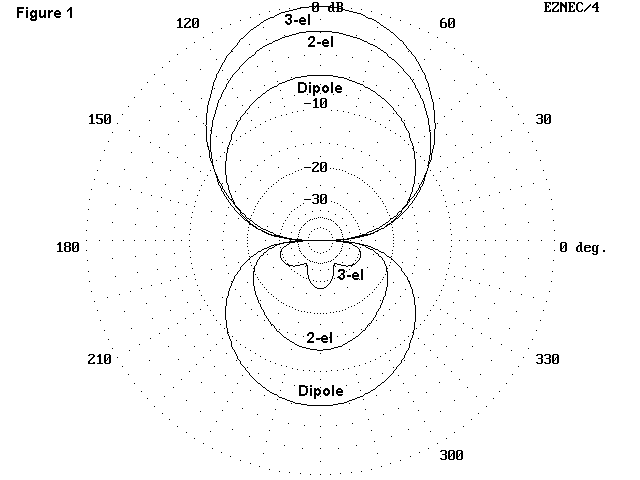 No. 1: dB, dBi, and dBd
No. 1: dB, dBi, and dBd
A most convenient way to compare power is as a ratio between two powers. For this purpose, we have the decibel or dB. One dB = 10 log (P1/P2), where P1 and P2 are any two powers it is relevant to compare. A power ratio of 2 is 3 dB; a ratio of 4 is 6 dB; a ratio of 10 is 10 dB. These marker points will guide you to intermediate values. Your transceiver output is 100 watts. Your linear output is 800 watts. Hence, your power gain is 9 dB to the antenna.
Antennas measure their power gain in the favored direction in dB. Since gain requires 2 powers to make the ratio, where does the second power come from? It comes from a standard reference. For most theoretical studies, the most common reference is dBi, decibels over an isotropic radiator. An isotropic radiator is a geometric point in free space with no material losses that radiates equally well in all directions. My rotatable aluminum backyard dipole at 35 feet over soils with average losses has a gain of over 7.5 dBi.
A second standard is dBd, decibels over a dipole in free space made of lossless infinitely thin wire. This theoretic dipole has a gain of 2.15 dBi. Hence, my backyard real dipole has a gain of over 5.35 dBd.
For many, if not most of the decisions you will make about antennas, neither dBi nor dBd are the real references. Suppose you wish to buy a 3- element monoband Yagi for 10. What improvement can you really expect over your dipole? Now your own antenna--an aluminum tube (with losses) antenna at a certain height over soil (with certain losses)--becomes the standard. Unfortunately, manufacturers do not rate their antennas by testing them on your mast in your yard. How can you use your knowledge of dBi and dBd to estimate the improvement the prospective antenna will make?
One way is to make antenna comparisons theoretically and extrapolate to your yard. Table 1 shows the gain figures for 3 antennas: a pretty good 3-element Yagi, a pretty good 2-element Yagi, and a dipole, all in free space. The 2-element Yagi has a forward gain of about 4.3 dB over the dipole, while the 3-element Yagi adds another 1.8 dB, for a total of 6.1 dB over the dipole. In the favored direction and in front-to-back ratio for nulling out QRM, you can expect similar performance from equivalent antennas mounted at the same height over the same terrain.
Table 1: Relative Antenna Gain using dBi and dBd and Antennas in Free
Space
Antenna Gain Gain over Gain over
in dBi dipole 2-element
Yagi
Dipole 2.1 ---- ----
2-element Yagi 6.4 4.3 dB ----
3-element Yagi 8.2 6.1 dB 1.8 dB
Antenna Gain Gain over Gain over
in dBd dipole 2-element
Yagi
Real Dipole 0.0 ---- ----
2-element Yagi 4.3 4.3 dB ----
3-element Yagi 6.1 6.1 dB 1.8 dB
Do not expect much more improvement than this, even if a manufacturer cites much higher numbers. The beams in this example can be tweaked for a little more gain or a little more front-to-back ratio, but not much and not both at once. And the ability of the antenna to hold its gain and front-to-back ratio over the entire 10-meter band will suffer.
As you might expect, it does not matter whether you make the gain comparison starting with figures in dBi or figures in dBd. You will get the same result. The only requirement is that you use the same reference for all your comparison calculations.
Since we started with a dipole, the charts seem to prefer dBd. That is an illusion, since we might have as easily started with a quarter-wave vertical, a 2-element Yagi (as column 3 shows), or ZL-Special. Moreover, had we placed the models over real ground, the gain numbers would have been intrinsically higher, beginning with a dipole gain of over 7.5 dBi or 5.4 dBd, but the differences would have been very similar.
Fig. 1 shows the free space azimuth patterns for the three antennas. Their relative proportions are identical no matter whether they start with dBi or dBd.

The relative gain of the 2-element Yagi over the dipole is evident, as is
the relative gain of the 3-element Yagi over the dipole and the 2-element
Yagi. That is what is crucial to know.
Updated 3-17-97. © L. B. Cebik, W4RNL. Data may be used for personal purposes, but may not be reproduced for publication in print or any other medium without permission of the author.